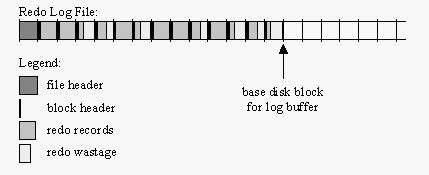隐式参数_trace_files_public决定了Oracle产生的trace文件是否公开,该参数默认值为FALSE,也就是非DBA/OINSTALL组的用户是没有权限读取数据库产生的trace文件的;在某些场合中我们需要让非DBA组的用户也能访问trace文件,就可以通过修改该参数实现。请看下面的例子:
SQL> select * from v$version;
BANNER
----------------------------------------------------------------
Oracle Database 10g Enterprise Edition Release 10.2.0.4.0 - 64bi
PL/SQL Release 10.2.0.4.0 - Production
CORE 10.2.0.4.0 Production
TNS for Linux: Version 10.2.0.4.0 - Production
NLSRTL Version 10.2.0.4.0 - Production
SQL> col name for a20
SQL> col value for a20
SQL> col describ for a40
SQL> SELECT x.ksppinm NAME, y.ksppstvl VALUE, x.ksppdesc describ
2 FROM SYS.x$ksppi x, SYS.x$ksppcv y
3 WHERE x.inst_id = USERENV ('Instance')
4 AND y.inst_id = USERENV ('Instance')
5 AND x.indx = y.indx
6 AND x.ksppinm LIKE '%_trace_files_public%'
7 order by x.ksppinm;
NAME VALUE DESCRIB
-------------------- -------------------- ----------------------------------------
_trace_files_public FALSE Create publicly accessible trace files
SQL> oradebug setmypid;
Statement processed.
SQL> oradebug ipc;
Information written to trace file.
SQL> oradebug tracefile_name;
/s01/10gdb/admin/YOUYUS/udump/youyus_ora_10268.trc
SQL> !ls -l /s01/10gdb/admin/YOUYUS/udump/youyus_ora_10268.trc
-rw-r----- 1 maclean oinstall 4206 Aug 11 20:51 /s01/10gdb/admin/YOUYUS/udump/youyus_ora_10268.trc
/*所产生的trace文件权限为640,非oinstall组用户无权限读取该文件*/
SQL> alter system set "_trace_files_public"=true;
alter system set "_trace_files_public"=true
*
ERROR at line 1:
ORA-02095: specified initialization parameter cannot be modified
/*修改该参数需要重启实例*/
SQL> alter system set "_trace_files_public"=true scope=spfile;
System altered.
SQL> startup force;
ORACLE instance started.
Total System Global Area 1577058304 bytes
Fixed Size 2084264 bytes
Variable Size 922747480 bytes
Database Buffers 637534208 bytes
Redo Buffers 14692352 bytes
Database mounted.
Database opened.
SQL> oradebug setmypid;
Statement processed.
SQL> oradebug ipc;
Information written to trace file.
SQL> oradebug tracefile_name;
/s01/10gdb/admin/YOUYUS/udump/youyus_ora_10430.trc
SQL> ! ls -l /s01/10gdb/admin/YOUYUS/udump/youyus_ora_10430.trc
-rw-r--r-- 1 maclean oinstall 5471 Aug 11 20:54 /s01/10gdb/admin/YOUYUS/udump/youyus_ora_10430.trc
/*other组用户也具有了读权限*/
SQL> ! ls -l /s01/10gdb/admin/YOUYUS/
total 24
drwxr-x--- 2 maclean oinstall 4096 Aug 11 20:56 adump
drwxr-x--- 2 maclean oinstall 4096 Aug 11 20:54 bdump
drwxr-x--- 2 maclean oinstall 4096 Aug 5 21:35 cdump
drwxr-x--- 2 maclean oinstall 4096 Aug 5 21:36 dpdump
drwxr-x--- 2 maclean oinstall 4096 Aug 5 21:37 pfile
drwxr-x--- 2 maclean oinstall 4096 Aug 11 20:54 udump
/*请注意修改_trace_files_public为true,并不会修改trace所在目录的权限,Oracle默认建立bdump/udump等trace目录时分配的权限为750,other组用户无法进入这些目录,需要修改目录权限为755,即o+r+x*/
SQL> ! chmod o+r+x /s01/10gdb/admin/YOUYUS/*dump
SQL> ! ls -l /s01/10gdb/admin/YOUYUS/
total 24
drwxr-xr-x 2 maclean oinstall 4096 Aug 11 20:56 adump
drwxr-xr-x 2 maclean oinstall 4096 Aug 11 20:54 bdump
drwxr-xr-x 2 maclean oinstall 4096 Aug 5 21:35 cdump
drwxr-xr-x 2 maclean oinstall 4096 Aug 5 21:36 dpdump
drwxr-x--- 2 maclean oinstall 4096 Aug 5 21:37 pfile
drwxr-xr-x 2 maclean oinstall 4096 Aug 11 20:54 udump
/*需要注意的另一点是修改_trace_files_public参数并不会引起既有的trace文件的权限被修改,典型的例子是alert log告警日志*/
[maclean@rh2 bdump]$ ls -l
total 20
-rw-r----- 1 maclean oinstall 12971 Aug 11 21:17 alert_YOUYUS.log
-rw-r--r-- 1 maclean oinstall 690 Aug 11 21:12 youyus_lgwr_10514.trc
SQL> SELECT x.ksppinm NAME, y.ksppstvl VALUE, x.ksppdesc describ
2 FROM SYS.x$ksppi x, SYS.x$ksppcv y
3 WHERE x.inst_id = USERENV ('Instance')
4 AND y.inst_id = USERENV ('Instance')
5 AND x.indx = y.indx
6 AND x.ksppinm LIKE '%_trace_files_public%'
7 order by x.ksppinm;
NAME VALUE DESCRIB
-------------------- -------------------- ----------------------------------------
_trace_files_public FALSE Create publicly accessible trace files
SQL> alter system set "_trace_files_public"=true scope=spfile;
System altered.
SQL> startup force;
ORACLE instance started.
Total System Global Area 1577058304 bytes
Fixed Size 2084264 bytes
Variable Size 922747480 bytes
Database Buffers 637534208 bytes
Redo Buffers 14692352 bytes
Database mounted.
Database opened.
SQL> !ls -l
total 32
-rw-r----- 1 maclean oinstall 21189 Aug 11 21:20 alert_YOUYUS.log
-rw-r--r-- 1 maclean oinstall 690 Aug 11 21:12 youyus_lgwr_10514.trc
-rw-r--r-- 1 maclean oinstall 690 Aug 11 21:20 youyus_lgwr_11136.trc


